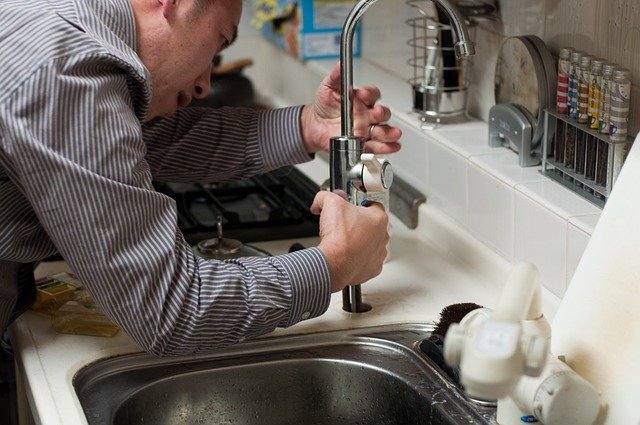Choosing the Right Water Dispenser Pump for Home
Looking for an easier way to pour water from large bottles? Water dispenser pumps provide a simple and affordable solution. Whether manual or battery-operated, these devices make it convenient to access drinking water without lifting heavy containers. This guide explains how they work, what to look for when buying one, and how to ensure compatibility with common bottle types used at home or in offices.

How Bottle-Top Water Pumps Make Everyday Hydration Easier
Bottle-top water pumps attach directly to standard water bottles, creating an instant dispensing system that requires minimal effort to operate. These pumps eliminate the physical strain of lifting heavy bottles, making water access more convenient for everyone in the household. The simple press-button or lever mechanism allows users to fill glasses, water bottles, or cooking containers without tilting or maneuvering large jugs.
Most bottle-top pumps feature universal sizing that fits common 3-gallon and 5-gallon water bottles. The installation process typically involves inserting the pump tube into the bottle opening and securing it with a twist-lock mechanism. Many models include spill-proof designs and drip-catching features that keep surfaces clean and dry during use.
Differences Between Manual and Automatic Dispensers
Manual water dispensers rely on hand-operated pumps or lever systems to draw water from bottles. These pumps require users to press a button or pump a handle to create suction and dispense water. Manual options are generally more affordable and don’t require electricity or batteries, making them reliable in any location. However, they do require some physical effort and coordination to operate effectively.
Automatic dispensers use battery-powered or rechargeable electric motors to pump water at the touch of a button. These systems provide consistent water flow without manual pumping and often include features like adjustable dispensing speeds and automatic shut-off mechanisms. Electric models typically offer more precise portion control and can accommodate users with limited hand strength or mobility challenges.
Choosing the Right Dispenser for Seniors
Seniors often benefit most from automatic dispensers that minimize physical effort and reduce the risk of spills or accidents. Electric pumps with large, easy-to-press buttons provide reliable operation without requiring grip strength or repeated pumping motions. Models with stable bases and non-slip features help prevent tipping during use.
Features particularly valuable for seniors include one-touch operation, adjustable flow rates, and clear water level indicators. Some dispensers offer programmed portion sizes, allowing users to dispense specific amounts without monitoring the flow. Battery-powered options with long-lasting charges reduce maintenance requirements while maintaining the convenience of automatic operation.
Water Dispenser Options for Children and Shared Spaces
Family-friendly dispensers should prioritize safety features and easy operation for users of all ages. Child-safe locks prevent accidental activation, while lightweight construction and ergonomic designs accommodate smaller hands. Dispensers with clear operation indicators help children understand when the device is active and when dispensing is complete.
In shared spaces like offices, classrooms, or family rooms, dispensers with higher capacity pumps and faster flow rates accommodate frequent use throughout the day. Models with replaceable or washable components support hygiene standards in multi-user environments. Some dispensers include portion control features that help manage consumption and reduce waste in shared settings.
| Product Type | Price Range | Key Features | Best For |
|---|---|---|---|
| Manual Hand Pump | $15-$30 | No power required, portable, simple operation | Budget-conscious users, outdoor use |
| Battery-Powered Electric | $35-$60 | Automatic dispensing, rechargeable, adjustable flow | General household use, seniors |
| USB Rechargeable Premium | $50-$80 | Smart features, portion control, LED indicators | Tech-savvy users, offices |
| Heavy-Duty Commercial | $70-$120 | High-volume capacity, durable construction | Large families, shared spaces |
Prices, rates, or cost estimates mentioned in this article are based on the latest available information but may change over time. Independent research is advised before making financial decisions.
Installation and Maintenance Considerations
Proper installation ensures optimal performance and longevity of water dispenser pumps. Most models require minimal setup, involving tube insertion and secure attachment to bottle openings. Regular cleaning of pump components prevents bacterial growth and maintains water quality. Removable parts should be washed weekly with mild soap and water, while internal mechanisms may require periodic sanitization according to manufacturer guidelines.
Battery-powered models need regular charging or battery replacement to maintain consistent performance. Users should monitor battery indicators and keep backup power sources available for uninterrupted operation. Manual pumps require occasional lubrication of moving parts and inspection of seals to prevent leaks or reduced suction efficiency.
Selecting the appropriate water dispenser pump depends on household size, user capabilities, and frequency of use. Manual options provide reliable, cost-effective solutions for basic dispensing needs, while automatic models offer enhanced convenience and accessibility features. Consider the specific requirements of all household members, including any mobility limitations or safety concerns, when choosing between manual and electric options. Regular maintenance and proper installation ensure long-term satisfaction with whichever pump type best serves your home’s hydration needs.




